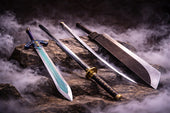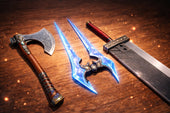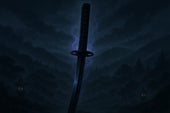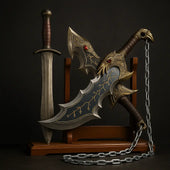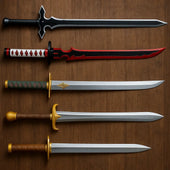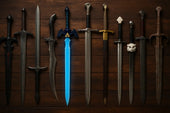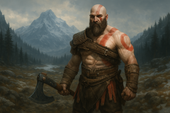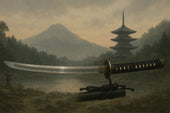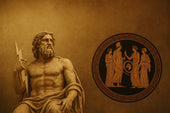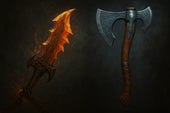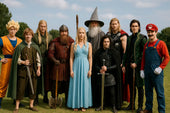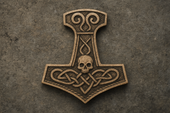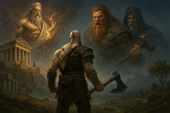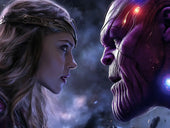In Norse mythology, Thor’s hammer, Mjölnir, stands as a symbol of power, destruction, and protection. Yet, it’s not just its raw strength that makes Mjölnir so fascinating—it’s the fact that only those deemed "worthy" can lift it. This concept of worthiness has been explored extensively in modern pop culture, particularly in the Marvel comics and films. The question of who can wield Mjölnir and why has captivated fans for decades, leading to some of the most iconic moments in superhero storytelling. But where did this worthiness test come from, and why does it resonate so deeply with audiences? Let’s delve into the origins of this legendary test and explore the characters who’ve either succeeded or failed in lifting Thor’s hammer!
The Origins of the Worthiness Test in Norse Mythology
To understand the worthiness test, we first need to look back at the origins of Mjölnir in Norse mythology. Mjölnir was not just any weapon—it was the chosen tool of Thor, the god of thunder and protector of both gods and humans. Forged by the dwarves Brokkr and Sindri, Mjölnir was incredibly powerful, capable of summoning lightning and vanquishing the enemies of Asgard. However, in the original myths, there was no explicit mention of a "worthiness test" as we understand it today.
-
Thor’s Connection to Mjölnir:
In the old sagas, Mjölnir was a symbol of Thor’s divine strength and role as a protector. The hammer was used to defend Asgard from the giants of Jotunheim, but it also had a more peaceful side—it was often used in blessings, such as to consecrate marriages or ensure fertility. Thor’s connection to Mjölnir was absolute, and no other character in the original myths was ever depicted as attempting to wield the hammer. -
Was There a Worthiness Test in Norse Mythology?
Interestingly, the idea that Mjölnir could only be lifted by someone "worthy" seems to be more of a modern interpretation. In the original myths, the hammer’s power was tied to Thor himself, and there was no suggestion that another god or mortal could be tested for worthiness. The worthiness test we know today was actually a creation of modern storytelling, most notably popularised by Marvel comics.
Marvel’s Introduction of the Worthiness Test
The transition from Norse mythology to Marvel’s superhero universe brought with it some significant changes. One of the most iconic additions was the introduction of the worthiness enchantment. In Marvel’s version of the story, Mjölnir was enchanted by Thor’s father, Odin, with the famous inscription: “Whosoever holds this hammer, if they be worthy, shall possess the power of Thor.” This enchantment added an entirely new dimension to Thor’s hammer.
-
Stan Lee’s Creation of Thor:
Thor first appeared in Journey into Mystery #83 in 1962, created by Stan Lee, Larry Lieber, and Jack Kirby. Lee’s vision was to introduce a superhero with the might and strength of a god, and Thor fit the bill perfectly. However, it was Odin’s enchantment that made Mjölnir unique. The concept that only the "worthy" could lift the hammer turned Mjölnir into a symbol of virtue, morality, and personal integrity, transforming it from a simple weapon into a test of character. -
Key Moments in the Comics:
Over the years, several characters have managed to lift Mjölnir, each one sparking debates and excitement among fans. One of the most memorable moments in the comics was when Captain America, embodying the ideals of courage and selflessness, lifted mighty Mjölnir during a battle to save the Avengers. Another notable character was Beta Ray Bill, an alien warrior who proved himself so worthy that he was granted his own hammer, Stormbreaker, by Odin himself.
Worthiness in the Marvel Cinematic Universe (MCU)
While the worthiness test was iconic in the comics, it reached new heights of popularity in the Marvel Cinematic Universe (MCU). Throughout Thor’s cinematic journey, the worthiness of Mjölnir became a key theme, with some of the most epic moments in the MCU revolving around who could—or couldn’t—lift the hammer.
-
Thor’s Journey of Worthiness:
In the 2011 Thor film, Thor is stripped of his powers and exiled to Earth by Odin, who deems him unworthy of Mjölnir due to his arrogance and recklessness. Thor spends much of the movie proving that he can become a better version of himself—one worthy of the hammer’s power. This journey of redemption and self-discovery forms the emotional core of Thor’s arc throughout the MCU, and the hammer serves as a constant reminder of what it means to be truly worthy. -
Captain America’s Epic Moment in Avengers: Endgame:
One of the most iconic moments in MCU history occurred in Avengers: Endgame when Captain America finally proved his worth by lifting Mjölnir in the climactic battle against Thanos. Fans had speculated for years that Steve Rogers was worthy of the hammer, and when the moment came, it was electrifying—both literally and figuratively! Cap wielding Mjölnir was a testament to his bravery, selflessness, and unwavering moral compass. -
Vision and the Worthiness Debate:
Another memorable moment came in Avengers: Age of Ultron when Vision, the synthetic being created by Tony Stark and Bruce Banner, casually lifted Mjölnir. This scene sparked a debate among fans—was Vision truly worthy, or was it his lack of humanity that allowed him to bypass the test? Vision’s ability to lift the hammer highlighted the complexity of the worthiness test and opened up new questions about what it means to be deserving of such power.
Other Characters and the Worthiness Test in Pop Culture
Beyond the Marvel universe, the worthiness test of Mjölnir has appeared in various other forms of pop culture, including crossover comics, video games, and animated series. Each iteration offers a fresh perspective on what it means to be worthy.
-
Superman and Wonder Woman:
In several crossover comics between Marvel and DC, we’ve seen moments where characters from the DC universe have lifted Mjölnir. Superman, known for his unshakable sense of justice, has been shown lifting the hammer on more than one occasion, proving that even across universes, the worthiness test applies. Wonder Woman, with her deep sense of honour and bravery, has also wielded Mjölnir, showcasing the universal appeal of the worthiness concept. -
Mjölnir in Video Games:
Video games featuring Thor and Norse mythology often incorporate the worthiness test as a gameplay mechanic. Players must prove their character’s worth to lift Mjölnir, adding a layer of challenge and meaning to the action. Games like Marvel’s Avengers and God of War have played with the idea of worthiness in creative ways, making Mjölnir a key element in the story. -
Animated Series:
In animated shows like The Avengers: Earth’s Mightiest Heroes and Ultimate Spider-Man, we’ve seen characters grapple with the worthiness test. These shows often explore what it means to be a hero, with Mjölnir’s worthiness enchantment acting as a symbol of the high moral standards required to wield true power.
What Makes Someone Worthy to Lift Mjölnir?
The question of what exactly makes someone "worthy" of lifting Mjölnir is one that has fascinated fans for decades. While the enchantment is clear in stating that worthiness is required, the traits that define worthiness are open to interpretation.
-
Qualities of Worthiness:
Common traits associated with those who can lift Mjölnir include courage, integrity, and selflessness. Characters who demonstrate these qualities often prove themselves worthy, while those who are arrogant, power-hungry, or selfish fail the test. However, there’s no single formula for worthiness, and that ambiguity is part of what makes Mjölnir’s enchantment so intriguing. -
Failure of the Test:
Several characters in pop culture have tried and failed to lift Mjölnir, including villains like Loki and even heroes like Tony Stark. Their failures often serve as important moments in their character development, showing that strength alone is not enough—moral integrity is just as crucial. The test challenges characters to confront their own flaws and rise to a higher standard.
The Symbolism of Mjölnir’s Worthiness Test in Modern Storytelling
The worthiness test of Mjölnir has become more than just a plot device—it’s a symbol of morality, leadership, and responsibility in modern storytelling. It resonates with audiences because it reflects the values we hold dear in our heroes.
-
A Symbol of Morality and Leadership:
The worthiness test serves as a powerful metaphor for the qualities that define a true leader. In a world where power is often misused, Mjölnir’s enchantment reminds us that only those with the right intentions and moral compass deserve to wield great power. -
Why Audiences Love the Test:
Part of the reason why the worthiness test resonates so strongly with fans is that it challenges our heroes to be more than just powerful—they must also be good. The idea that true power comes from within, from a place of courage, humility, and self-sacrifice, is a message that continues to inspire.
The worthiness test of Thor’s hammer, Mjölnir, has become a beloved and iconic trope in pop culture. From the pages of Marvel comics to the big screen in the MCU, the idea that only the worthy can lift Mjölnir has created some of the most memorable moments in modern storytelling. It’s more than just a test of strength—it’s a reflection of the values that define our heroes.
So, who’s your favourite character to lift Thor’s hammer? And do you think they truly deserved it? As pop culture continues to evolve, so too will the stories of who can lift Mjölnir and why. But one thing remains clear: Mjölnir will always be a symbol of power, integrity, and the eternal quest to be worthy.




